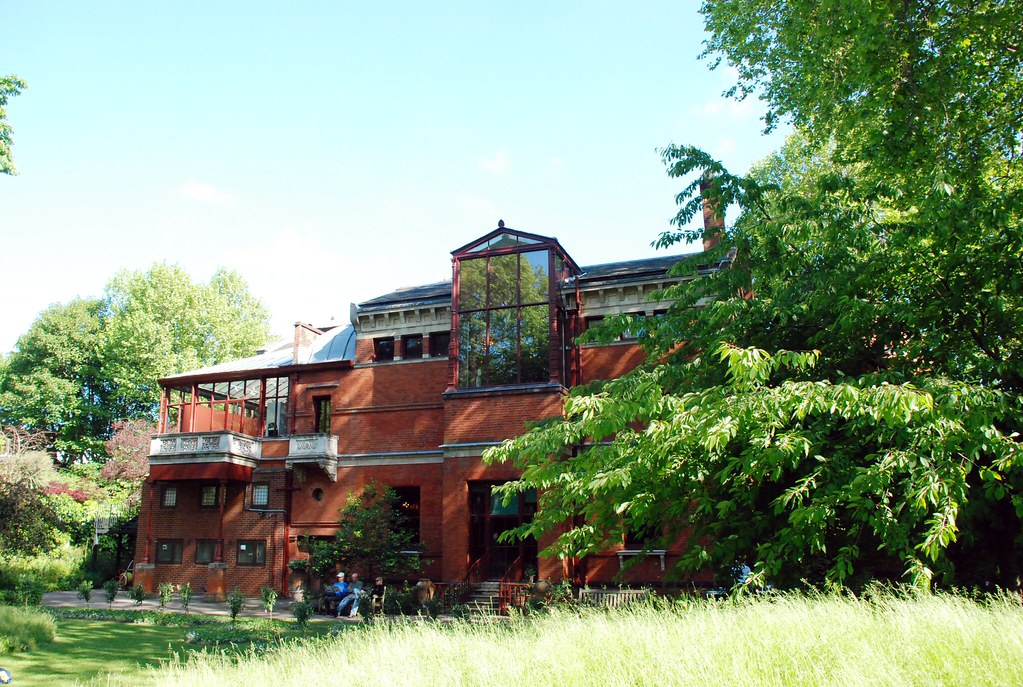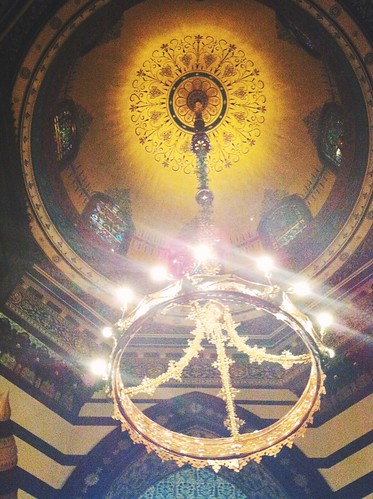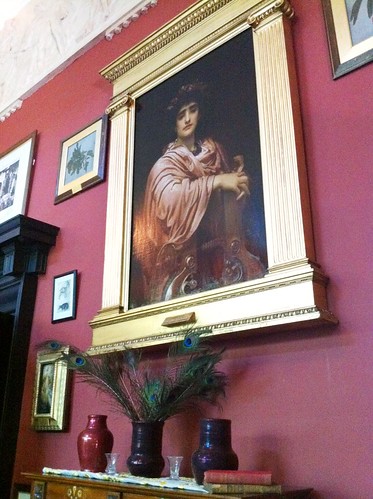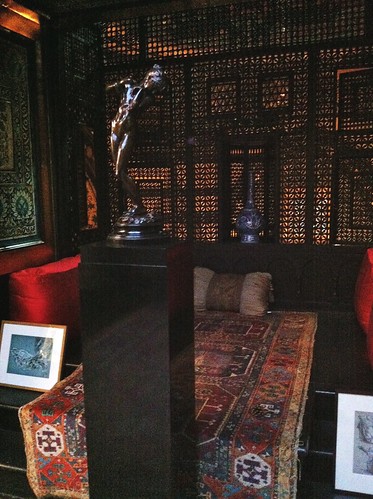The Leighton House Museum, located in the Holland Park district of the borough of Kensington and Chelsea in London, is the former home and studio of the Victorian neoclassicist painter Lord Frederic Leighton. It was designed by the architect George Aitchinson who Leighton befriended in Rome and over the course of thirty years the unique studio-house was expanded, developed and ornamented. The construction of the house began in 1865 and when Leighton died in 1896, it was still not finished. 12 Holland Road eventually became the ultimate architectural expression of Leighton’s admiration of Aestheticism, Orientalism and the Arts and Crafts movement.
View of the house from the garden.
![]()
The winter studio, an extension made in 1889-90. It was built to provide studio space for artists working towards exhibiting at the Royal Academy.
Leighton’s studio, where he also hosted musical evenings.
Left: The Arab Hall built between 1877-81. It was modelled on an interior at La Zisa, a 12th century palace in Palermo, Sicily. The hall displays Leighton’s extensive collection of late 15th and early 16th century tiles, most of which he bought on his trip to Damascus in 1873. Right: Leighton’s An Italian Lady, which hangs in the dining room.
The Silk Room, with paintings by Tintoretto and Millais. It was the last room to be completed before Leighton’s death.
Leighton’s Corinna of Tanagra and Clytie, both in neoclassical frames. Corinna was an ancient greek poet and Clytie a water nymph rejected by Appollo in Ovid’s Metamosphopses, after she buried his new lover alive in an attempt to win him back. After watching him ride across the skies in his golden chariot for nine days, Clytie is said to have been transformed into a heliotrope or a sunflower.
An amazing little nook with Egyptian latticework windows, overlooking the Arab Hall, complete with a running fountain. I was very reluctant to leave that spot – the view of the hall and the sound of the water was mesmerising. It is like being engulfed by a Pre-Raphaelite painting.
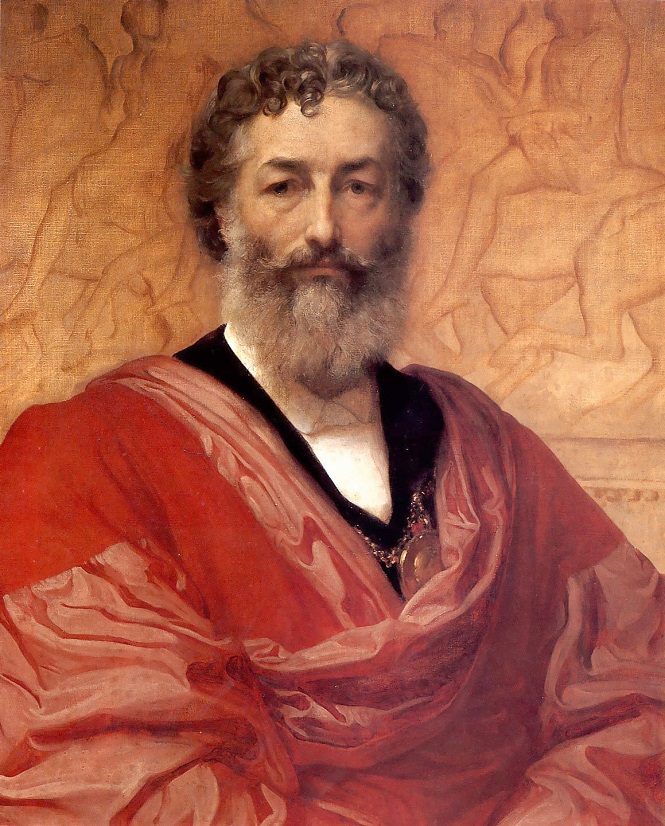
Frederic Leighton, Self portrait (1880)
Frederic Leighton was born in 1830, in Scarborough, to a financially independent and close knit family that supported him throughout his life. He received an allowance from his father until the latter died, and his older sister Alexandra strived to preserve 12 Holland Road as a memorial to Leighton after his death. He travelled a great deal and lived abroad for most of his twenties, first in Italy and then in Paris, before he returned to London in 1860. Once back home, Leighton joined the 38th Middlesex Artist Rifle volunteers and started associating himself with the Pre-Raphaelites. By 1875 he had risen to the rank of Lieutenant-Colonel and become Dante Gabriel Rossetti’s most important artistic rival. Leighton continued to travel throughout his life, making several trips to the Middle East in the 1860s and 70s, collecting tiles and pottery. In 1878 he was appointed president of the Royal Academy in and in 1896 he was granted the shortest hereditary peerage in British history lasting only until the next day, when he died of heart failure. He never married or had any children, though there has been speculations as whether we was homosexual or possibly had a child by one of his models. In 1900 some of his work was exhibited at the Paris exhibition.
![]()
The Leighton House Museum is quite possibly my favourite London museum, rivalled only by Sir John Soane’s Museum. It is not just a painter’s studio, it is a living work of art, demonstrating Leighton’s artistic vision and ambitious nature, and a grand home fit for entertainment and receiving guests – even Queen Victoria visited once. It is a museum with an amazing atmosphere and both Leighton’s own work and paintings from his collection are on display throughout the house, though the elaborate aesthetic and orientalist interiors are in themselves a strong argument for a visit.
Links
The Leighton House Museum website
Take a virtual tour of the museum
Desiring Women: Myth, Love and Leighton’s Clytie
